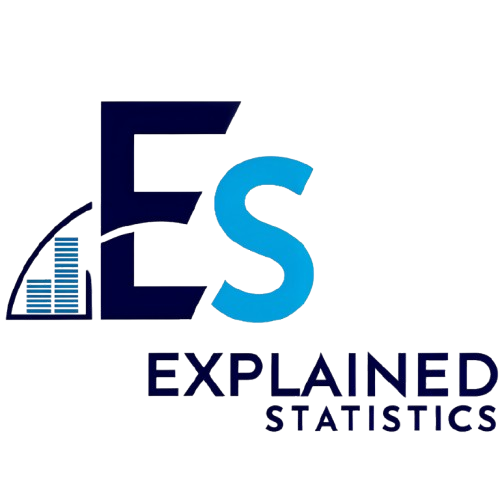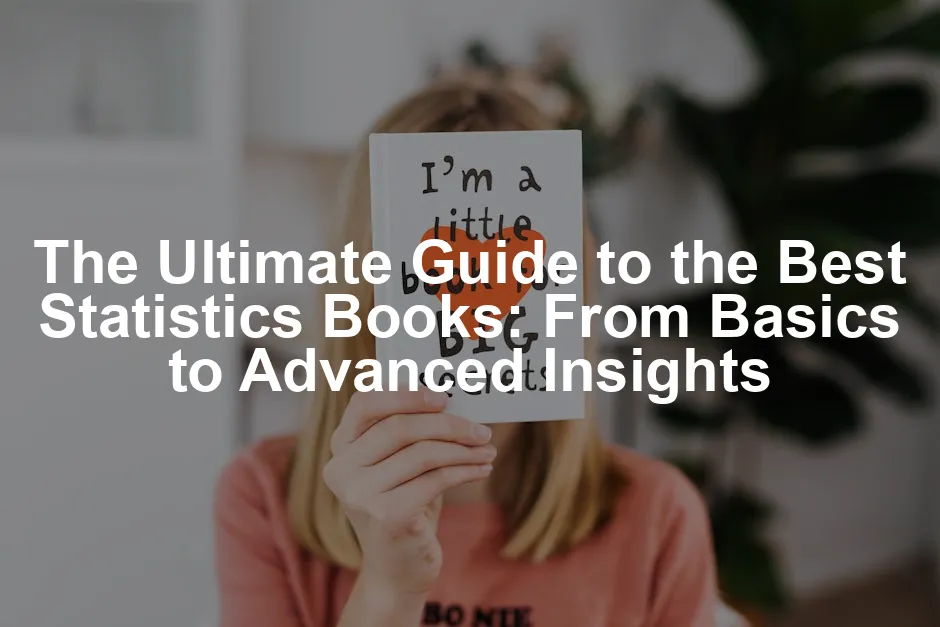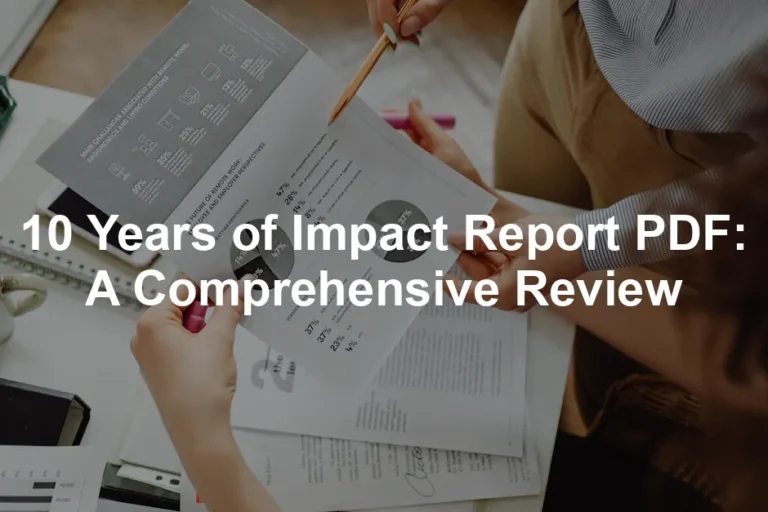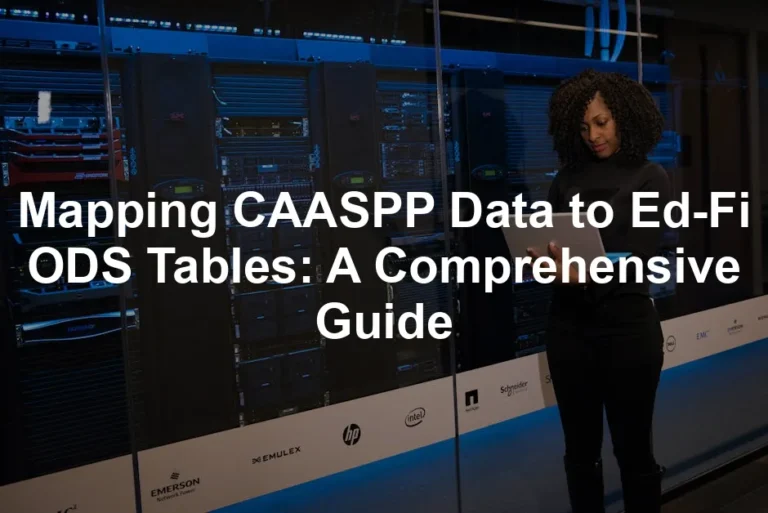Introduction
In a world awash with data, understanding statistics is no longer a luxury—it’s a necessity. Picture this: you’re watching a basketball game, and the commentator rattles off player stats faster than you can say “three-pointer.” Suddenly, those numbers transform into insights about performance. Whether you’re a budding data scientist, a business professional, or just someone who wants to make sense of the numbers that shape our lives, the right statistics book can be your best friend.
But with so many options available, how do you choose? Fear not! This guide will take you through the best statistics books out there, each chosen for its unique approach, clarity, and practical application.
Get ready to discover the gems that can elevate your understanding of statistics from confusion to clarity, all while having a little fun along the way! You’ll find books that make complex concepts feel as cozy as your favorite sweater. We’ll cover everything from introductory texts that demystify the subject to advanced resources that challenge even the most seasoned statistician.
Statistics doesn’t have to feel like a foreign language. A well-chosen book can transform those intimidating equations into tools for making informed decisions. So grab your favorite reading spot and prepare to unlock the secrets of the statistical universe. Whether you want to ace your next data-driven project or simply impress your friends with your newfound knowledge, the right statistics book is waiting for you.

Summary of Key Points
Statistics doesn’t have to be a daunting subject filled with complex equations and confusing jargon. In this extensive guide, we will explore a diverse range of statistics books tailored to different learning styles and levels, from beginners to advanced learners. We’ll highlight the importance of statistics in various fields, including business, healthcare, and social sciences, and how mastering statistical concepts can enhance decision-making and critical thinking skills.
The guide will also cover:
- Introductory Texts: Perfect for those just starting, these books simplify concepts and present statistics in a relatable manner, often using real-world examples.
- Intermediate and Advanced Books: For those looking to deepen their knowledge, these texts dive into more complex topics and methodologies, often incorporating programming languages like R and Python.
- Practical Applications: Books that focus on applying statistical methods in real-world scenarios, particularly in data science and analytics.
- Humorous and Engaging Reads: Statistics doesn’t have to be dry! Some authors use humor and storytelling to make the learning process enjoyable.
- Key Recommendations: A curated list of the best statistics books, with insights into what makes each one valuable for different audiences.
By the end of this guide, you’ll have a comprehensive understanding of the best statistics books available and how they can fit your learning journey. Prepare to take your statistical skills to the next level!

The Importance of Learning Statistics
Statistics is more than just a series of numbers; it’s a toolkit for making sense of the chaotic world around us. In economics, statistics helps us analyze trends, forecast future events, and inform policy decisions. Think about it: how else would we understand the nuances of a recession or the impact of interest rates?
In healthcare, statistics plays a critical role. It enables researchers to evaluate treatment efficacy and make data-driven decisions about patient care. Ever wondered how clinical trials determine if a new drug is effective? You guessed it—statistics!
Social sciences also thrive on statistics. From psychology to sociology, researchers rely on statistical methods to interpret human behavior and societal trends. So, when you hear someone say, “That’s just statistics,” remember: it’s not just numbers; it’s the foundation of informed decision-making.
However, many people shy away from statistics due to misconceptions. Some believe it’s only for mathematicians or scientists. Others think it’s all about complicated formulas and dense equations. Here’s the truth: anyone can grasp statistics! With the right resources, statistical literacy can empower you to make informed choices.
Imagine being able to evaluate the credibility of a news article or understand the significance of a poll. Now, that’s power! As you navigate through life, having a solid grasp of statistics equips you to question data presented to you.
So, don’t let fear hold you back! Learning statistics opens up a treasure trove of insights and opportunities. Whether you’re deciphering sports stats, analyzing job market trends, or even questioning the latest viral TikTok challenge, knowledge of statistics can lead you to informed conclusions. Let’s embrace the numbers and uncover the truths they hold!

Best Statistics Books for Beginners
Overview of Beginner-Friendly Books
Why These Books Stand Out
Naked Statistics by Charles Wheelan: This book strips away the dread from data. Wheelan’s witty approach makes complex concepts accessible and entertaining. You’ll learn about inference, correlation, and regression without feeling overwhelmed. For more insights on this book, check out Wheelan’s Naked Statistics.
This book is a great introduction to statistics, making it enjoyable and easy to understand. Learn more about Naked Statistics here.
Statistics for People Who (Think They) Hate Statistics by Neil J. Salkind: This gem is all about demystifying statistics. Salkind’s engaging style takes you through essential topics, making learning feel less like a chore and more like a conversation with a friend. Don’t forget to grab your copy of Statistics for People Who (Think They) Hate Statistics.
Both books shine because they connect statistical concepts to real-world scenarios. Wheelan sprinkles humor throughout his writing, making tricky ideas feel relatable. Whether discussing sports or societal issues, he shows how statistics is woven into our daily lives.
Salkind follows suit, using engaging examples to illustrate statistical principles. The conversational tone makes you feel like you’re having a friendly chat rather than slogging through a textbook. It’s this blend of real-world relevance and humor that keeps readers turning the pages.
Learning statistics doesn’t have to be a lonely endeavor. With these beginner-friendly books, you’ll find companionship in numbers, and perhaps even a newfound appreciation for the art of statistics. So, why not take that first step into the world of statistics? Grab one of these books and let the journey begin!

Practical Applications of Statistics
Applications in Data Science and Business
Statistics is more than just numbers on a page; it’s a game-changer in various fields, especially data science and business. Let’s break down how two standout books shine in this area.
Practical Statistics for Data Scientists focuses on real-world applications. It’s not just about theory; it dives into programming languages like Python and R. You’ll learn how to apply statistical methods to solve actual problems. Imagine analyzing customer data to predict trends or using machine learning algorithms to enhance product recommendations. This book arms you with the tools to do just that. For a comprehensive guide on this topic, check out Practical Statistics for Data Scientists PDF.
This resource is invaluable for those looking to apply statistics in data science. Find out more about Practical Statistics for Data Scientists here.
Then there’s Head First Statistics. This book takes a more engaging approach. It’s interactive and full of humor, making learning feel like a fun puzzle rather than a tedious chore. You’ll tackle concepts like histograms and probability distributions, all while solving real-world examples. Who knew statistics could be this entertaining? With such an approach, readers are more likely to remember the material and apply it effectively. Don’t forget to check out Head First Statistics.

Importance of Practical Knowledge
Practical knowledge of statistics is crucial across industries. Whether you’re in healthcare, finance, or marketing, statistical tools can significantly enhance decision-making processes. For instance, businesses use statistical analysis to determine customer satisfaction levels. This analysis can inform product development and marketing strategies.
In healthcare, statistics helps evaluate treatment effectiveness. By analyzing clinical trial data, researchers can determine which therapies work best. This leads to better patient outcomes and more efficient use of resources. If you’re interested in learning more about this, consider picking up The Data Warehouse Toolkit.
Understanding statistics also equips professionals to interpret data accurately. In today’s data-driven environment, being able to sift through numbers and draw insights is invaluable. It fosters critical thinking and empowers individuals to make informed choices.
In summary, mastering practical statistics is not just beneficial; it’s essential. It transforms how we approach problems, enabling us to make data-backed decisions that can lead to success in any field. So, grab those statistics books and let’s get to work!

Humor and Engagement in Statistics
Books that Make Learning Fun
Statistics often gets a bad rap—dry, dull, and just plain intimidating. But fear not! There are books that bring a breath of fresh air to this field.
Take How to Lie with Statistics by Darrell Huff. This classic is a riot! Huff cleverly illustrates the misuse of statistics with a humorous twist. He exposes the tricks that can skew data interpretations, making you both laugh and think. Who knew that a book about statistics could be so entertaining? It’s a must-read for anyone looking to navigate the murky waters of data. Get your copy of How to Lie with Statistics.
Then we have Freakonomics by Steven D. Levitt and Stephen J. Dubner. This dynamic duo explores the hidden side of everything—from crime rates to school performance—using statistical analysis. Their engaging storytelling makes complex ideas digestible and enjoyable. You’ll find yourself questioning everything you thought you knew about society. Don’t miss out on this enlightening read; grab Freakonomics today!

Benefits of Engaging Texts
Humorous and engaging texts like these do wonders for learning. They reduce anxiety around statistics, making it more approachable for newcomers. When readers can relate to the material, they’re more likely to stay engaged. Plus, laughter helps reinforce learning. So, if you want to get ahead in statistics, pick up these titles and prepare for an enjoyable ride through the world of numbers!

Benefits of Engaging Texts
Learning statistics can feel like wrestling an octopus—tentacles everywhere! But humor and storytelling can tame that beast. When authors inject wit into their writing, they make complex concepts more digestible. This approach not only tickles your funny bone but also eases anxiety. Think about it: would you rather read a dry textbook or one that makes you chuckle?
Books like Naked Statistics by Charles Wheelan use relatable anecdotes and lighthearted language. This makes learning statistics feel more like a friendly chat than a chore. By connecting ideas to everyday experiences, readers can relate, which enhances understanding. When statistics are wrapped in humor, those intimidating equations start to look less like monsters and more like friendly puzzles.
Storytelling also plays a crucial role. A good story can transform abstract data into real-life scenarios. When readers see how statistics apply to their lives—be it in sports, healthcare, or social issues—they’re more likely to stay engaged. This connection makes the learning process enjoyable and memorable.
Moreover, humor reduces stress. New learners often feel overwhelmed by numbers and formulas. A light-hearted approach can diffuse that tension, making the subject seem approachable. When students laugh, they relax, and that relaxed state is fertile ground for learning.
So, if you’re nervous about tackling statistics, consider picking up a book that knows how to make you laugh. Engaging texts can transform your experience from fearful to fun, turning statistics into a subject you actually want to dive into. You might just find yourself loving the numbers after all!

Conclusion
In conclusion, the right statistics book can transform your understanding of data and its implications in the real world. From foundational texts that simplify complex ideas to advanced resources that investigate intricate methodologies, there’s a perfect match for every learner. Embrace the journey of learning statistics, and who knows? You might just discover a newfound love for the numbers that shape our lives.
Statistics isn’t merely about crunching numbers; it’s a powerful tool for making informed decisions. The right book can help you see patterns, recognize trends, and understand the world more deeply. Whether you’re a student, a professional, or just curious, statistics can enrich your perspective.
As you sift through options, remember that humor and engagement are key. Books that entertain while educating can make the learning process enjoyable. So, why wait? Grab a book, pour yourself a cup of coffee, and dive into the fascinating world of statistics. It’s time to unlock the secrets behind the numbers and apply them in your everyday life. Happy reading!

FAQs
What is a good statistics book for beginners?
Naked Statistics by Charles Wheelan is highly recommended for its approachable style.
How can I effectively study statistics?
Combining textbook learning with practical exercises and real-world applications can enhance understanding.
Is statistics difficult to learn?
Like any subject, it can be challenging initially, but with the right resources, it becomes manageable and even enjoyable.
Should I learn statistics or data science first?
Learning statistics provides a solid foundation for understanding data science concepts.
What are some resources for practicing statistics?
Many textbooks come with supplementary online resources, exercises, and practical examples.
Are there books that make statistics fun?
Absolutely! Titles like How to Lie with Statistics and Freakonomics use humor and storytelling to engage readers.
Can I learn statistics online?
Yes! Many online platforms offer free courses and resources to learn statistics at your own pace.
What if I struggle with math?
Don’t worry! Choose books that focus on practical applications over complex theories.
Please let us know what you think about our content by leaving a comment down below!
Thank you for reading till here 🙂
All images from Pexels




